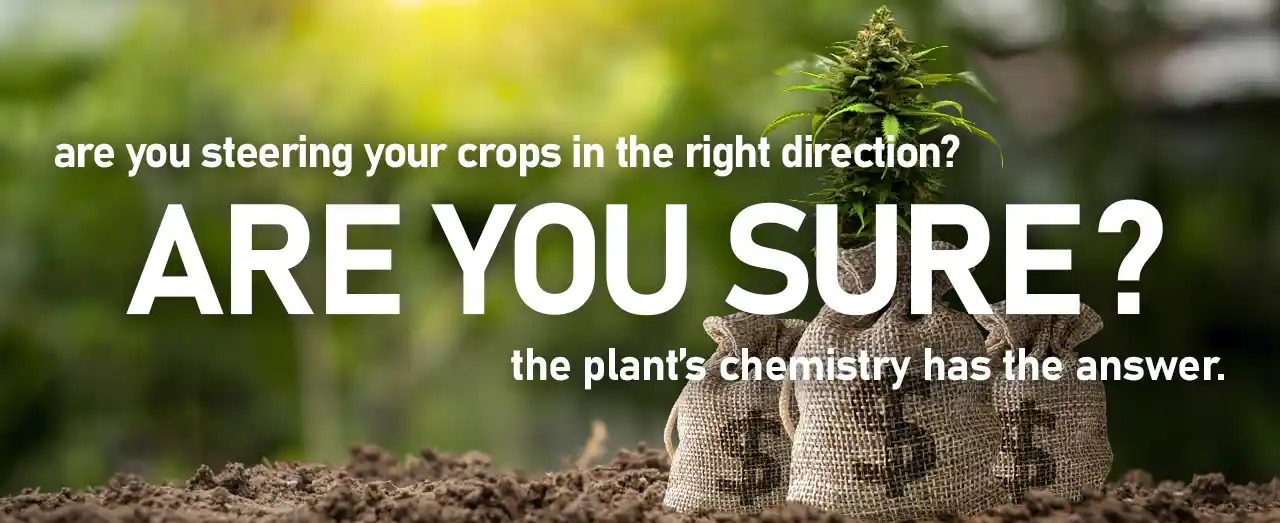CROP STEERING WITH THE HARVESTIQ
Cannabis is a complex plant about which we still have a lot to learn. Over 100 aroma & flavor compounds have previously been reported in cannabis, highlighting the complexity of its makeup. Recent research has identified compounds called flavorants, a class of chemicals that includes esters, alcohols, and other compounds which contribute to the citrus/tropical fruit & savory/chemical aromas of certain strains. More research is needed to understand how these compounds effect not only the taste & aroma of cannabis, but also their potential therapeutic benefits, and how they affect the overall experience. Terpenes and minor cannabinoids contribute to the flavors & experience of cannabis, interacting with each other (the Entourage effect) and with our endocannabinoid systems to enhance and mitigate different effects. Growers know that rich terpene profiles in combination with minor/major cannabinoids can produce superior products and strive to grow crops that will keep their customers coming back. These compounds must be monitored and measured to steer crops for optimal quality and revenue.
Crop steering is designed to influence plant development, particularly in controlled environment agriculture, where growers need to maximize potency, quality & yield to boost profit margins. Cannabis growers use crop steering techniques to manipulate environmental factors such as light, temperature, humidity, stress, and nutrients to optimize plant growth and enhance the production of terpenes and cannabinoids.

Like people using sunscreen when the sun gets too powerful, cannabis boosts its trichome production to protect itself from too much UVB light. So, one way to boost trichome production, and subsequently terpene production, is to add UVB light. By manipulating the timing and light spectrum, growers can steer crops towards desired outcomes. An optimized light spectrum will improve the value and quality of cannabis crops.
Cannabis plants are sensitive to nutrients, and there’s a fine line between properly feeding your plants and burning them with chemicals. The macronutrients nitrogen (N), phosphorus (P), and potassium (K), form the cornerstone of cannabis plant health. As such, these three nutrients usually feature front and center on fertilizer products in the form of an NPK ratio. Minor cannabinoids like CBN and CBG are becoming important for different wellness effects. If a customer wants a CBN-rich product, the producers need to ensure that the CBN/CBG ratio is higher. Since the ratio of nitrogen to phosphorous and potassium affects the ratio of CBN/CBG, it is critical to optimize the NPK mixture to ensure production of the cannabinoid(s) that consumers demand. Verifying crops are heading in the right direction ensures you are achieving the desired outcomes, ultimately saving time and money,
Cannabis needs more than just NPK. It also needs secondary & micronutrients like calcium for cell wall development, magnesium to support photosynthesis, and sulfur for the formation of chlorophyll and the production of proteins, amino acids, enzymes which will eventually contribute to the plant’s chemo-profile, hence the taste, aroma, & experience. By adjusting nutrient formulations and application rates based on crop stage and SOP’s, growers can optimize quality. While these crop steering techniques have shown promise in optimizing crop quality, they are not without limitations. You can follow all the rules and best practices, but how do you know what you’re doing is working?
Monitoring your crop’s chemistry provides valuable insight into the overall health and nutrient uptake of the plants. By analyzing the chemical composition, producers know how well the plants are absorbing nutrients from the soil, and more importantly, if they are going to yield the cannabinoids, terpenes, and other compounds that will ensure a high quality, high revenue crop at harvest. Measuring plants as they grow allows for real-time course correction that will ensure optimal quality, efficiency, and increased revenue. The HarvestIQ provides easy to read, actionable results so growers can make real-time course corrections, ultimately mitigating loss and increasing profits. Close the loop on the environmental monitoring tools used in grow rooms, act on real-time information detailing the quality of crops based on crop steering techniques.
